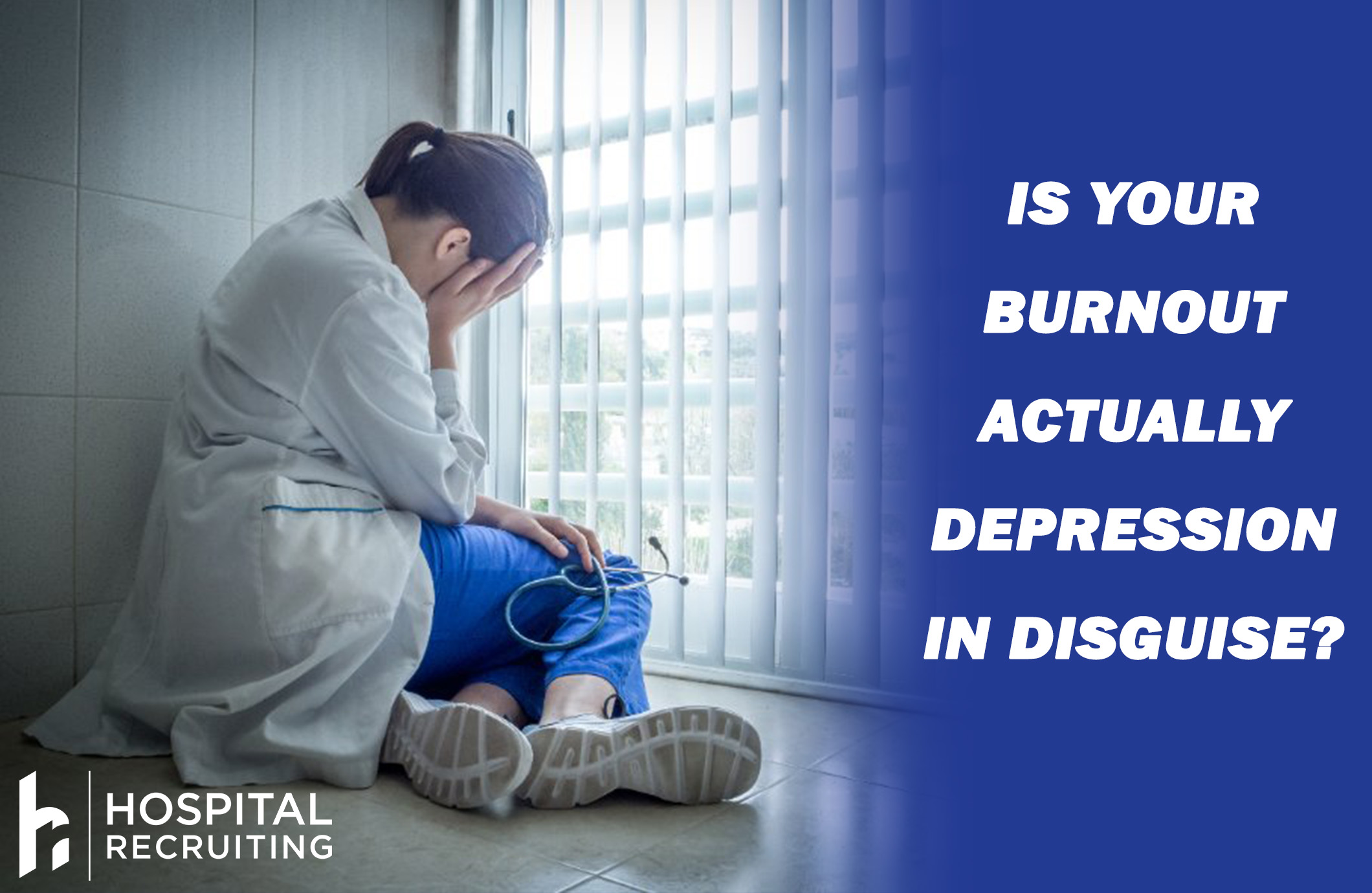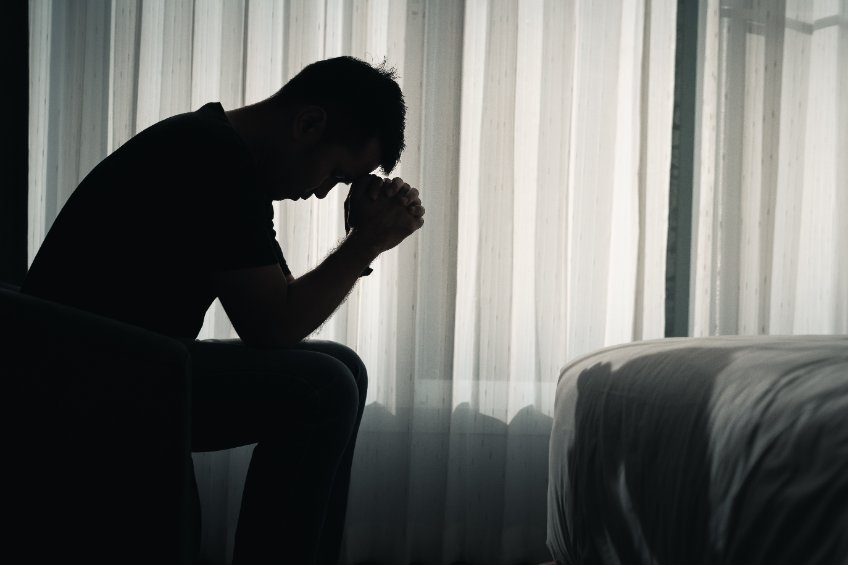Burnout is Really Depression in Disguise was originally published on HospitalRecruiting.

For most of us, burnout began as a steady decline. Perhaps this occurred over several years. Sadly, the current self-sacrificing work culture in the United States has expedited the amount of time it takes to burn someone out.
Being burned out is living in a constant state of overwhelming exhaustion. This is significantly more extreme than day-to-day tiredness or feeling ill. It’s akin to depression in that you cannot muster the strength to do almost anything.
The anhedonia prevents you from enjoying things you used to enjoy and can stimulate an almost hatred and disdain for work that used to bring you joy.

There are three parts to burnout:
- Overwhelming exhaustion.
- Feelings of cynicism and detachment from the job.
- A sense of ineffectiveness and lack of accomplishment.
You suffer from constant brain fog, irritability, and depressive symptoms. You may sleep well the night before, but never feel rested. Just knowing that you must go back to work on Monday ruins your entire weekend.
You tend to discount the positive, and only focus on the parts of the job you dislike. Every task, assignment, and job duty feel like an enormous mountain to climb.
You may notice that you can’t find anything to look forward to and feel hopeless about your future.
To recover from the overwhelming exhaustion, the only treatment that truly helps is rest. This is more than just an extended weekend or few days off.
When you are completely burned out, many report that it can take nearly 6 months to recoup energy levels. This is 6 months of deeply restful, peaceful time away from the stimulus that caused burnout.
Is burnout a syndrome or a larger part of depression?

This question has been a hot topic of debate in the last several years, and in this article, we will discuss a few reasons why.
The Diagnostic and Statistical Manual of Mental Disorders (aka DSM5), does not currently list burnout syndrome as a legitimate diagnosis. In some countries however, such as Sweden, burnout is a justification to take paid sick leave. In the United States, healthcare billing has an ICD-10 code for burnout, that is titled ‘state of vital exhaustion.’
The clinical tool first designed to measure burnout, called the Maslach Burnout Inventory (MBI), was designed from a series of surveys. While it’s an excellent tool to quantify burnout, some clinicians criticize the scale, saying that it isn’t grounded on firm clinical observation or sound theorizing. Currently, the MBI is a gold standard for measuring burnout.
Depression is defined by anhedonia and dysphoric mood. High amounts of chronic, unresolvable stress and feeling ineffective at work have long been regarded as contributors to depression. You can see how the symptoms of burnout problematically overlap with depression.
In one study that looked at over 5,000 participants suffering from burnout, 90% met criteria for depression, according to the PHQ-9, a very commonly used depression screening survey. Many were positive for atypical depressive symptoms, such as mood reactivity, weight gain, hyperphagia, hypersomnia, leaden paralysis, and highly sensitive to interpersonal rejection. All of these primed the subjects for social and occupational impairment and pervading fatigue.
Studies show that burnout and depression cause similar attention and behavioral deficits, such as focusing on negative parts of a situation. In cognitive behavioral therapy, this is called discounting the positive. The allostatic load that burnout places on someone was no longer significant when researchers statistically controlled for depression. (Allostatic load is the biological index of the cumulative impact that chronic stress places on someone).
Some speculate that burnout is more of a consequence from social psychology than true organic, pathological depression, despite both having inseparable symptoms. For example, a psychiatrist would not say that someone has job-related depression. They are diagnosed simply with depression, whereas burnout is more or less job related.
Are burnout and depression one and the same?

The criteria to diagnose burnout is neither nosologically consistent nor discernable. It’s worth noting that burnout can occur in many other places outside of work. Arguably, the occupational domain is arbitrary and self-fulfilling.
Current research argues that burnout is a form of depression rather than a differentiated type of pathology. This is important for numerous reasons.
Firstly, burnout should not be limited to the three components of overwhelming exhaustion, depersonalization, and ineffectiveness. Depression has many symptoms that should each be addressed.
Secondly, labeling someone as simply “burned out” can delay the diagnosis and treatment of depression. Clinically, depression that is left unmitigated can lead to suicidal ideation.
When people feel burned out at work, their productivity suffers. The natural response is to work harder, which only worsens clinical depression. Treating moderate to severe depression only with supportive measures has a high rate of failure.
And thirdly, depression is a qualifying reason to take a medical leave of absence and utilize benefits such as FMLA. Insurance will cover counseling and medical expenses. Depending on the severity of the case, disability insurance may also kick in.


